Discovering Doha: A Guide to Must-Visit Attractions
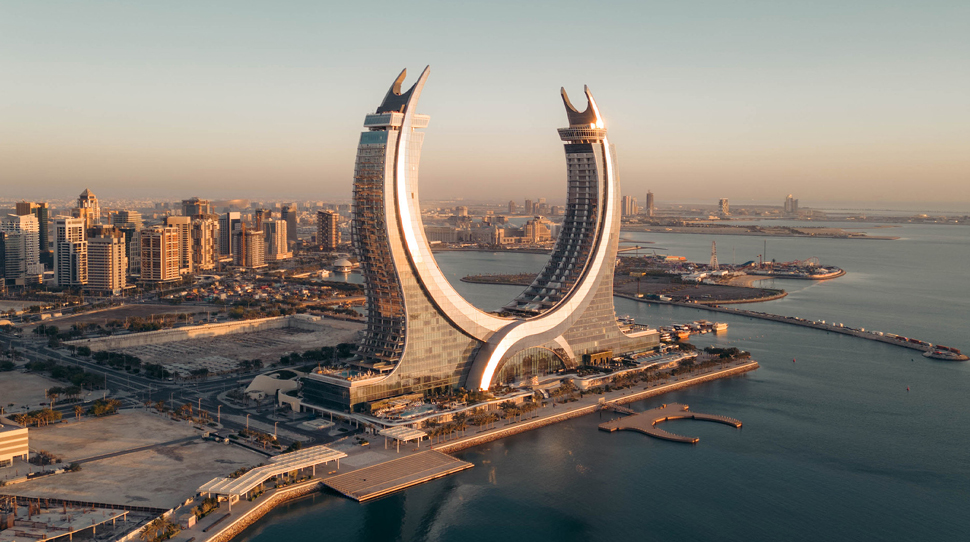
Doha, the capital of Qatar, offers visitors a diverse blend of experiences, mixing both rich cultural heritage and some modern innovations. This is an amazing place for history enthusiasts, culinary explorers, or adventure seekers alike.Here’s a curated list of top attractions and activities to consider on your next trip to Doha. 1. Wander Through Souq Waqif Souq Waqif stands as a testament to Qatar’s rich trading history. This market offers a labyrinth of shops selling traditional garments, spices, handicrafts, and souvenirs. Visitors can also try local cuisine at the numerous eateries or enjoy live performances and cultural shows that frequently take place in the area. 2. Stroll Along the Doha Corniche The Doha Corniche is a picturesque waterfront promenade stretching over seven kilometers along Doha Bay. Lined with palm trees and lush green spaces, it’s an ideal spot for morning jogs, evening walks, or simply relaxing by the sea. The promenade offers stunning views of the city’s skyline and is a hub for various recreational activities. 3. Explore the Museum of Islamic Art Designed by the renowned architect I.M. Pei, the Museum of Islamic Art is a masterpiece in itself. Situated on its own island, the museum houses an extensive collection spanning 1,400 years of Islamic art, including textiles, ceramics, manuscripts, and more. The museum’s unique architecture and its serene surroundings make it a must-visit destination. Museum is open from 9a.m. to 9p.m., non-stop. 4. Visit the National Museum of Qatar Designed by architect Jean Nouvel, the National Museum of Qatar resembles a desert rose in its architectural form. The museum offers interactive exhibits that narrate the story of Qatar’s past, present, and future, providing deep insights into the nation’s history and culture. Times for visiting the Museum are: Sunday: 9am–7pmMonday: 9am–7pmTuesday: ClosedWednesday: 9am–7pmThursday: 9am–9pmFriday: 1:30pm–7pmSaturday: 9am–7pm 5. Relax at Katara Cultural Village Katara Cultural Village is Doha’s focal point for art, culture, and cuisine. The village boasts art galleries, theaters, and performance venues, hosting events ranging from film screenings to musical concerts. Visitors can also enjoy a variety of dining options, from traditional Qatari dishes to international cuisines. When in Katara, don’t miss the trendy restaurant Kamachi – and don’t miss its incredible brunch! Queues may be a little long sometimes in this place, but it’s definitely worth it. 6. Experience the Thrills at Meryal Waterpark For those seeking adventure, Meryal Waterpark offers a plethora of water-based attractions, including the world’s tallest water slide tower. The park’s recent addition, the Alghazal rollercoaster, adds to the excitement, making it a perfect destination for families and thrill-seekers alike. 7. Discover Public Art Installations Doha’s commitment to art is evident through its numerous public art installations scattered across the city. From the vibrant “Doha Mountains” by Ugo Rondinone near the Ras Abou Aboud beachfront to the intriguing “Gekröse” by Franz West along the Corniche, these artworks enrich the urban landscape and offer thought-provoking experiences. 8. Relax at Al Bidda Park Adjacent to the Corniche, Al Bidda Park is one of Doha’s oldest and most cherished green spaces. Spanning over 1.7 million square meters, the park offers walking and cycling paths, playgrounds, and picnic areas, making it a favorite spot for both locals and tourists seeking relaxation amidst nature. 9. Attend Festivals and Cultural Events Doha’s cultural calendar is brimming with events that celebrate its rich heritage and contemporary arts scene. From the annual Doha Tribeca Film Festival to traditional celebrations like Garangao during Ramadan, visitors have the opportunity to immerse themselves in the local culture and festivities. 10. Savor Qatari Cuisine No visit to Doha is complete without indulging in its culinary delights. From the aromatic machboos (a spiced rice dish) to sweet treats like luqaimat, the city’s diverse food scene offers a gastronomic journey that reflects its rich cultural tapestry. Dining at local restaurants or exploring the food stalls in Souq Waqif provides an authentic taste of Qatar 11. Escape the heat at Doha’s malls Doha’s malls are not just shopping centers; they’re comfortable havens during the city’s scorching summers. These complexes offer air-conditioned relief along with extensive entertainment options, from international brands to family-friendly activities. Some of Doha’s finest include Villaggio Mall, known for its Venetian-inspired design and indoor canal, and Doha Festival City, popular for its extensive dining options, luxury shopping, and indoor theme parks. 12. Enjoy the charm of The Pearl-Qatar The Pearl-Qatar is one of Doha’s most iconic neighborhoods, known for its upscale marina, elegant residences, and vibrant atmosphere. Visitors often come here to stroll along picturesque walkways, relax at cozy cafes, or enjoy a delightful meal at waterfront restaurants. The European-inspired architecture combined with stunning views makes The Pearl an essential part of any visit to Doha. 13. Explore the vibrant Mina District Mina District has recently captured attention for its colorful buildings, incredible atmosphere, and popularity on social media. Formerly Doha’s old port area, Mina has transformed into a trendy spot with eclectic boutiques, lively cafes, and art spaces. The district’s visually striking streets and relaxed vibe make it a great place for photography, leisurely walks, and immersing yourself in Doha’s youthful energy. Doha seamlessly unites tradition with modernity, offering visitors lots of experiences that cater to various interests. Exploring its historic sites, trying its culinary delights, and admiring its architectural marvels ensures an enriching and memorable trip.
Best Wadis in Oman: A Guide to the Most Stunning Natural Oases
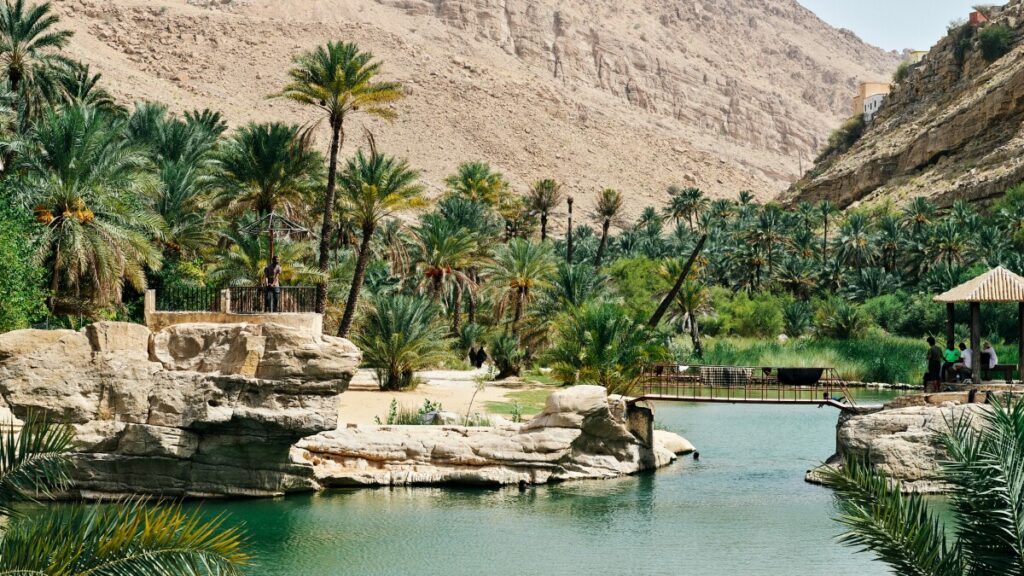
Oman is home to some of the most breathtaking wadis in the Arabian Peninsula, offering lush green oases, turquoise pools, and dramatic rocky landscapes. These wadis are perfect for adventure seekers, nature lovers, and anyone looking to escape the desert heat. Here’s a guide to the best wadis in Oman, each with its unique charm and must-visit appeal. 1. Wadi Shab One of Oman’s most famous wadis, Wadi Shab is a paradise of turquoise pools, waterfalls, and caves. A short boat ride across the river is required to access the hiking trail, which leads to stunning rock formations and hidden pools. The highlight is the cave with a waterfall at the end of the wadi, a perfect reward for those willing to swim through the canyon. How to Get There: Located about 1.5 hours from Muscat, near Tiwi, along the coastal highway. Activities: 2. Wadi Bani Khalid Unlike Wadi Shab, Wadi Bani Khalid is easily accessible and perfect for a relaxed day out. It features year-round water pools, palm-fringed lagoons, and dramatic cliffs. The wadi is known for its emerald-green waters and natural rock formations, making it a favorite among families and tourists. How to Get There: Located about 3 hours from Muscat, in the Ash Sharqiyah region. Activities: 3. Wadi Tiwi Often overshadowed by its neighbor Wadi Shab, Wadi Tiwi is a hidden gem with traditional villages, lush plantations, and dramatic rock walls. It offers a more rugged and less touristy experience, with opportunities to drive through narrow roads lined with date palms. How to Get There: Located near the town of Tiwi, just off the coastal highway, a short distance from Wadi Shab. Activities: 4. Wadi Damm For those looking for an off-the-beaten-path adventure, Wadi Damm is a remote and scenic spot featuring unique rock formations and ancient petroglyphs. It is particularly striking after rainfall when the pools fill with fresh water. How to Get There: Located in Al Dhahirah Governorate, about 2.5 hours from Muscat. Activities: 5. Wadi Al Arbeieen Wadi Al Arbeieen is one of the most dramatic wadis in Oman, featuring towering cliffs, deep pools, and flowing waterfalls. It requires a bit of off-road driving to reach but is well worth the effort for those seeking solitude and stunning landscapes. How to Get There: Located about 1.5 hours from Muscat, accessible via an off-road drive. Activities: 6. Wadi Hawer A lesser-known yet stunning wadi, Wadi Hawer offers a unique experience with its winding riverbeds, small waterfalls, and picturesque landscapes. This wadi is perfect for those seeking a quiet escape from the more crowded tourist spots. How to Get There: Located in the Al Wusta region, requiring a 4WD for access. Activities: Tips for Visiting Wadis in Oman Oman’s wadis offer a perfect combination of adventure and tranquility, making them must-visit destinations for travelers seeking to experience the country’s natural beauty. If you’re planning on visiting any time soon, consider joining our ladies Oman tour for the best of fun and culture. Have Questions? Our Expert Can Help! If you cannot join our tour but still would like to visit with us, we can help you on that! Fill out the form with your details, and we’ll arrange a callback at your convenience. Please, indicate the dates when you will be coming, how many people and what you’re planning on visiting on the message box. Contact us! This site is protected by reCAPTCHA. Google’s Privacy Policy and Terms of Service apply.
Musandam: A Must-Visit Destination in Oman

Located in the northernmost part of Oman, the Musandam enclave is a stunning destination popular for its breathtaking landscapes and adventure opportunities. Separated from the rest of the country by the United Arab Emirates, this mountainous region offers spectacular fjords, rich marine life, and exciting activities. Whether for a short Musandam trip or a full Musandam day trip, visitors will find plenty to explore. A Unique Landscape: Arabian Fjords and Crystal-Clear Waters Musandam is famous for its fjords, often called “The Norway of Arabia.” Unlike Scandinavian fjords, the arid cliffs here plunge into turquoise waters, creating a striking contrast. The best way to explore them is aboard a traditional dhow, the region’s characteristic wooden boat. These tours allow visitors to spot dolphins, swim in hidden coves, and snorkel in marine-rich waters. Most boat trips also include local food such as rice, salads, and drinks, ensuring a relaxing experience. Sadly, some areas suffer from pollution, including plastic bottles, cans, and other trash. Visitors are encouraged to respect the environment and keep the area clean. Khasab: The Gateway to Musandam The capital, Khasab, is a peaceful port town that serves as a base for exploration. The Khasab Fort, built in the 17th century by the Portuguese, has been restored to highlight local history. From the port, dhows set off to the fjords. 4×4 excursions take visitors to Jebel Harim, the highest peak in Musandam at 2,087 meters. The summit offers breathtaking panoramic views. Adventure in the Heights: Jebel Harim and Musandam’s Mountains Musandam is an ideal destination for adventure lovers. The rocky mountains hide ancient petroglyphs and small isolated villages. 4×4 routes reveal winding trails through gorges and cliffs. For a more immersive experience, travelers can hike to enjoy the tranquil landscape. Diving and Snorkeling in Musandam The waters are a paradise for divers. Marine biodiversity includes vibrant corals, schools of colorful fish, nurse sharks, and rays. Lima Island and Telegraph Island are among the best diving spots. The latter played a key role in the 19th-century telecommunication link between India and Europe. How to Get to Musandam Musandam is easily accessible by road from Dubai and other parts of the UAE, making it an ideal escape for residents and visitors alike. Travelers can drive their own cars or book with agencies offering bus pickups from Dubai for added convenience. UAE residents can also obtain an e-visa online for a smooth travel experience. For those who want more than just a Musandam day trip, staying overnight is a great option. Visitors can choose from hotels, city explorations, hiking, or even camping near the beach for a full weekend experience. Plan Your Musandam Trip This place combines history, breathtaking landscapes, and adventure. Whether sailing through fjords, exploring historic forts, or diving in crystal-clear waters, this region offers an unforgettable experience. While we do not cover Musandam in our Oman tour, we can help arrange a Musandam day trip through a trusted partner. For those interested in a full Omani experience, we recommend joining our ladies’ Oman tour, which offers an immersive journey through the country’s rich culture and landscapes. If you visit Oman, Musandam is a must-see destination. It offers a blend of adventure, nature, and relaxation, making it perfect for all types of travelers.
Abu Dhabi Main Bus Terminal: A Complete Guide
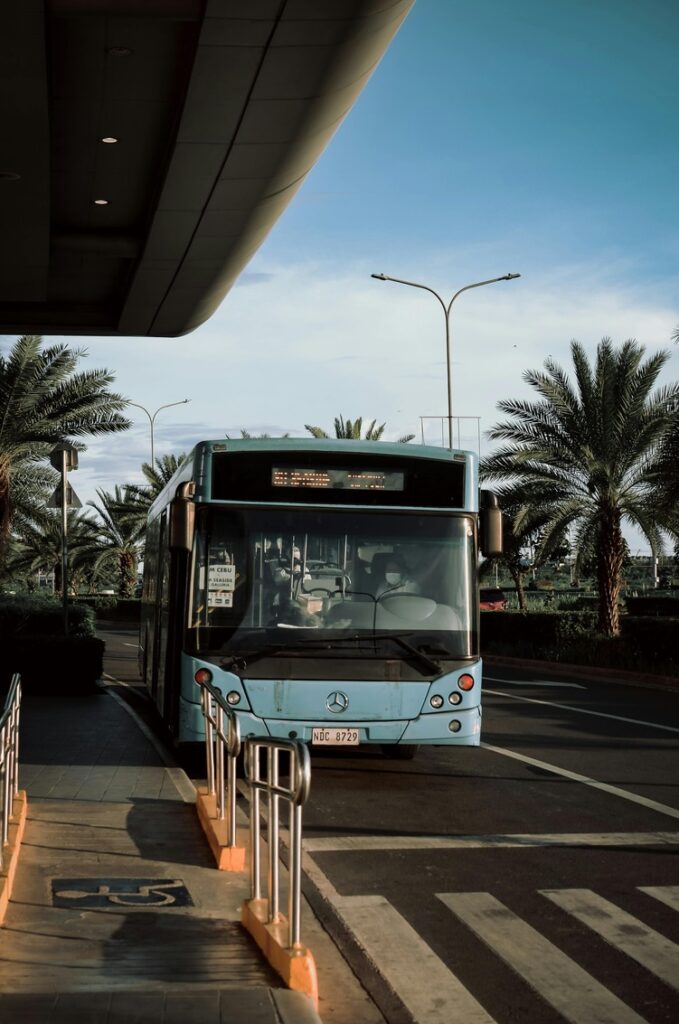
The Abu Dhabi Main Bus Terminal is a key spot for travel in the city. It provides convenient and affordable travel options in Abu Dhabi and other emirates. With well-maintained facilities and frequent bus departures, it is a reliable choice for commuters and long-distance travelers. Abu Dhabi Main Bus Terminal: A Complete Guide Location Facilities and services Operating hours Intercity travel Ticketing and fare information Explore Abu Dhabi Tips for travelers 1. Location The Abu Dhabi Main Bus Terminal is located on Muroor Road, Al Nahyan, Zone 1, Abu Dhabi, United Arab Emirates. It is a key transit point in the city, connecting travelers to various destinations within Abu Dhabi and across the UAE. 2. Operating Hours of Abu Dhabi Main Bus Terminal The terminal is open 24 hours a day, with high usage in the early morning and late afternoon. All intercity services operate between 5 AM and midnight. 3. Facilities and Services The terminal has various facilities for travelers’ needs, ensuring a smooth and comfortable journey. Organized layout: Many ticket counters make buying tickets quick and easy. It also decreases the waiting time. Comfortable waiting areas: The bus station offers spacious and clean waiting areas. It creates a pleasant waiting experience. On-site conveniences: A small food court provides refreshments, and a souvenir shop allows travelers to purchase something memorable. Clean and comfortable buses: The buses are well-maintained, air-conditioned, and have comfortable seats for passenger comfort. Free Wi-Fi: Free Wi-Fi is available at the terminal and in the buses so passengers can stay connected. Friendly and helpful staff: Drivers and terminal staff are friendly and helpful, assisting passengers as needed. 4. Intercity Travel: Routes to Dubai For those planning to travel to Dubai, the terminal offers primary bus services: E100 service to Al Ghubaiba bus station: This route heads to Al Ghubaiba Bus Station in Bur Dubai. The journey time is around two hours, including three intermediate stops. The bus station is next to Al Gubaiba Metro Station, which makes it easy for people to take the metro. E101 service to Ibn Battuta station: This service provides a direct route to Ibn Battuta Station in Dubai, taking approximately 1 hour and 40 minutes. The bus stop is near the Ibn Battuta Metro stop – just a short walk. 5. Ticketing and Fare Information The fare for a one-way trip to Dubai is AED 25. You can buy tickets in cash at the terminal’s ticket counters. Additionally, you can purchase tickets online through the RTA mobile app. Nol cards are also accepted for onward travel within Dubai’s public transport system. 6. Explore Abu Dhabi from the Main Bus Terminal When you arrive at the Abu Dhabi Main Bus Terminal, you have many options to explore the city: Public buses: The terminal is a main stop for many local buses. You can take buses to the Corniche and the Sheikh Zayed Grand Mosque, but it’s best to confirm the routes when you arrive. The city has a big network of buses that are easy to use. Taxis: Taxis are readily available at the terminal. They’re a convenient way to get to the different places in Abu Dhabi. 7. Tips for Travelers Arrive early: It’s best to arrive on time to avoid long lines at ticket counters. Considerations: Check luggage size and weight limits on your chosen bus service. Know your destination: Know which bus terminal you want to visit. Prepare for crowds: The terminal can become crowded during peak travel times. Bringing a book or magazine can make your wait more enjoyable. The Abu Dhabi Main Bus Terminal is an excellent example of the city’s effort to provide good public transport. It’s a reliable choice for daily travel and trips around the UAE.
Visitez Global Village à Dubaï
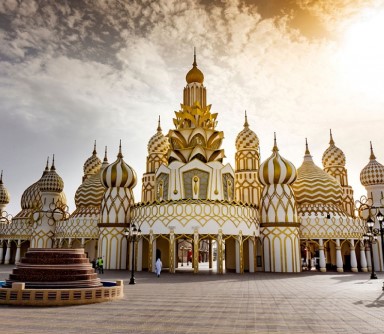
Global Village in Dubai is a must-visit outdoor spot, bringing together over 90 cultures in one place. With 30 themed pavilions, it’s a great place to explore different cultures, enjoy international foods, and shop for unique products. Whether you’re with family, friends, or traveling solo, there’s something for everyone. Explore the Pavilions Global Village is home to 30 vibrant pavilions, each representing a different country or region. These pavilions are not only a feast for the eyes but also offer a glimpse into the traditions, art, and lifestyle of cultures from around the world. Here are some of our top recommendations: UAE Pavilion: Don’t miss the chance to try traditional Emirati food like Luqaimat (sweet dumplings served with honey). Also, enjoy Regag, freshly made Emirati flatbread with cheese, prepared right in front of you. It’s the perfect place to dive into the flavors of the UAE. Saudi Arabia Pavilion: If you’re looking for affordable and stylish Abayas, this is the place! Don’t hesitate to negotiate, especially if you’re buying several—it’s part of the experience. Plus, you can also find Arabian perfumes with musc, oud, and wood! South Korea Pavilion: One of the most popular pavilions, it’s known for its K-pop performances and is also a great spot to shop for Korean skincare products. Japan Pavilion: From Japanese cheesecake and matcha-flavored treats to unique souvenirs like kimonos, the Japan Pavilion is a must-visit for fans of Japanese culture. Don’t forget to try the 10 yen cheese coin, a fun and delicious Japanese snack. Thailand Pavilion: If you’re looking to relax, this pavilion offers the best experience: Thai massages. It’s also a great place to explore local products and enjoy some delicious Thai street food. India Pavilion: Stop by for a cup of Karak tea and grab some samosas. The pavilion also offers a fantastic selection of Indian clothing and accessories. Morocco Pavilion: Enjoy a Moroccan tea while watching cultural shows. Turkey Pavilion: Known for its delicious baklava and ice cream, it’s a sweet lover’s paradise. It’s also a great spot to pick up Turkish decorative items. Dining at Global Village Food is one of the biggest attractions at Global Village. You can taste dishes from around the world in the different pavilions. There are also vast alleys full of food trucks. One of the favorites is the Bosnian kebabs , their meat is delicious and served in bread with a yummy sauce. If you’re in the mood to sit and relax at a table, there are also restaurant and café options! But one thing is sure: come with an empty stomach, as you’ll want to try so many foods! Timings and Entry Fees Global Village is open from October to April. The park operates from 4 PM to midnight, Sunday to Wednesday, and from 4 PM to 1 AM, Thursday to Saturday. On Tuesdays (except public holidays), the park is exclusively for families, couples, and ladies. The entry fee is AED 30 per person, with weekday tickets available for AED 25 (valid from Sunday to Thursday, excluding public holidays). Children under the age of 3, seniors over 65, and persons of determination can enter for free. Getting to Global Village Global Village is easily accessible by both car and public transport. If you’re driving, the park is conveniently located along two major highways in Dubai, offering 20,000 parking spots across various zones. General parking is free in areas P1 to P12. For a premium experience, VIP parking is available for AED 200 per day, while paid parking is offered for AED 120 per day. Additionally, valet parking is available at the Happiness Gate for AED 150. If you’re traveling by public transport, Global Village is served by multiple RTA bus routes from key locations in Dubai, as well as from nearby emirates like Ras Al Khaimah and Ajman. For added convenience, rickshaw services are available for AED 5 per person, taking you from the parking area to the entrance. Guest Services Global Village ensures a comfortable visit for all guests with various services, including ATMs, pharmacies, and prayer rooms. For those needing assistance, electric scooters are available for rent starting at AED 60, while baby carts can be rented for AED 15. Wheelchairs are available from AED 10, and portable charging stations are also provided throughout the park. Washrooms are well-maintained for convenience. Global Village in Dubai is a must-visit, depending on your mood. Whether you’re catching up with friends while strolling through the pavilions, enjoying international food, or watching exciting shows, there’s something for everyone. You can also shop for clothes, skincare products, and unique souvenirs.Make sure to plan your visit to this vibrant cultural hub and take in everything it has to offer! Weekends can get quite crowded, so it’s best to go early right after the opening or visit during weekdays for a more relaxed experience.
Discover Al Wajh: 8 Things You Can’t Miss in This Red Sea Gem
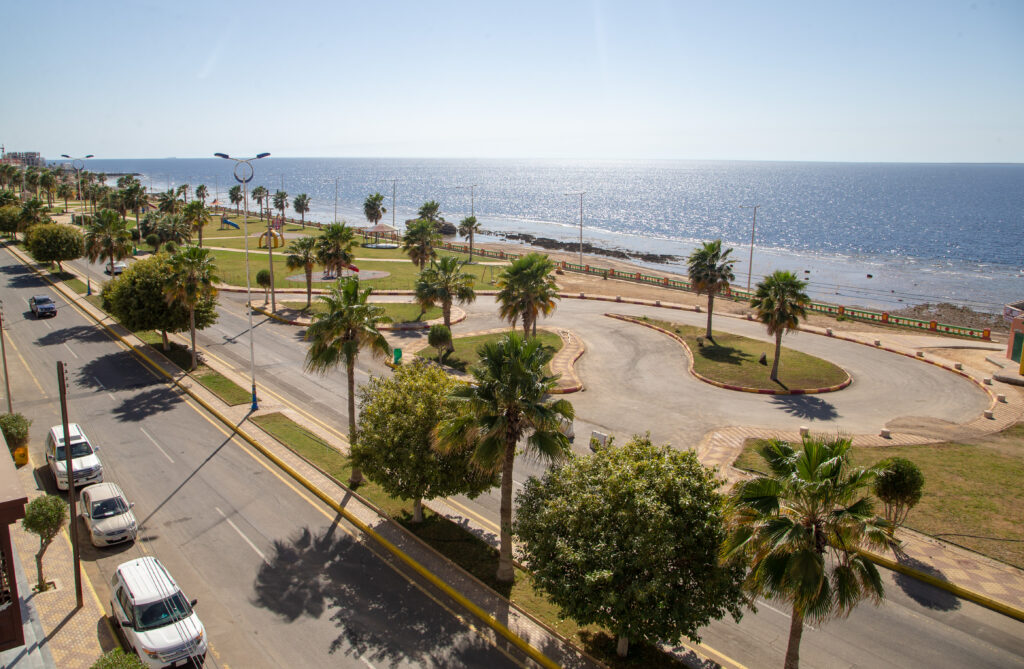
Located in the Tabuk province, about 1,000 kilometers from Riyadh, Al Wajh is a charming coastal city with a special allure. Known for its pristine beaches, rich history, and incredible culture, this lesser-explored destination offers a unique experience in Saudi Arabia. Discover 8 must-do activities in Al Wajh. Summary 1. Explore Al Wajh’s Old Town Walking through the streets of Al Wajh’s Old Town feels like traveling back in time. This historic district preserves the traditional Hejazi architecture, characterized by stone houses with ornate wooden windows known as rawashin, a signature of the Ottoman era. Many of these structures have been restored, while others remain inhabited, adding to the town’s authentic atmosphere. As you stroll through the narrow alleys, you’ll come across old shops and small cafés where locals gather to enjoy tea or Arabic coffee. It’s a fantastic place for photography and for getting a glimpse of what life was like before modernization. 2. Visit Al Wajh Castle Built in 1875, Al Wajh Castle is one of the city’s most iconic landmarks. Originally, it served as a military fortress and government headquarters during the Ottoman period, guarding the coastline against potential invasions. Today, the castle has been restored and transformed into a museum, displaying historical exhibits and old photographs of the city. From its highest point, visitors can enjoy breathtaking panoramic views of the harbor and the Red Sea, making it a perfect spot to watch the sunset. 3. Relax at Al Wajh Corniche park If you’re looking for a peaceful place to unwind, the Al Wajh Corniche is an ideal choice. This coastal park runs along the shoreline, featuring walking paths, picnic areas, and benches where you can sit and enjoy the refreshing sea breeze. The Corniche is especially popular among local families, particularly in the late afternoons when the weather cools down. It’s great for walking, exercising, or simply sitting back and watching the sun dip below the horizon, painting the sky in golden and crimson hues. 4. Enjoy Al Wajh’s stunning beaches Al Wajh’s beaches are one of its greatest attractions. Unlike busier coastal destinations in Saudi Arabia, here you’ll still find untouched beaches with soft white sand and crystal-clear waters. Some of the best beaches include: 5. Taste the local cuisine One thing you absolutely must do in Al Wajh is try its fresh seafood. Thanks to its coastal location, the city has excellent cuisine, primarily based on fish and seafood from the Red Sea. Seaside restaurants typically serve the catch of the day, either grilled or fried, accompanied by seasoned rice and fresh salads. 6. Visit Al-Ashraf Mosque Built over 200 years ago, Al-Ashraf Mosque is a significant religious site for the local community and a beautiful example of traditional Islamic architecture. Its design blends Ottoman and Saudi influences, featuring a 14-meter-high minaret overlooking the sea. The mosque’s location near the bay adds to its serene and spiritual ambiance. It’s an excellent place for those who appreciate historic architecture and want to learn more about the city’s religious heritage. 7. Explore Al Wajh fish market For an authentic local experience, visit Al Wajh’s Fish Market, where fishermen sell their fresh daily catch. This lively marketplace offers a glimpse into the city’s maritime culture, with stalls filled with tuna, grouper, lobster, and other seafood. If you love cooking, you can buy fresh fish and prepare it yourself. There are also small food stalls where you can enjoy seafood cooked on the spot, allowing you to taste it in an authentic and lively setting. 8. Visit Camel Rock One of Al Wajh’s most unique natural landmarks is Camel Rock, a fascinating rock formation shaped like a resting camel. Located in the desert outside the city, this geological wonder has been sculpted by wind and erosion over thousands of years, creating an eerie resemblance to the animal that has long been symbolic of Arabian culture. Conclusion Al Wajh is a hidden gem on the Red Sea coast. This destination has something for every traveler looking for an authentic Saudi experience. If you’re planning a trip to northwestern Saudi Arabia, make sure to include Al Wajh in your itinerary—you’ll be pleasantly surprised!
City Walk: A Must-Visit Annual Attraction Full of Entertainment in Jeddah
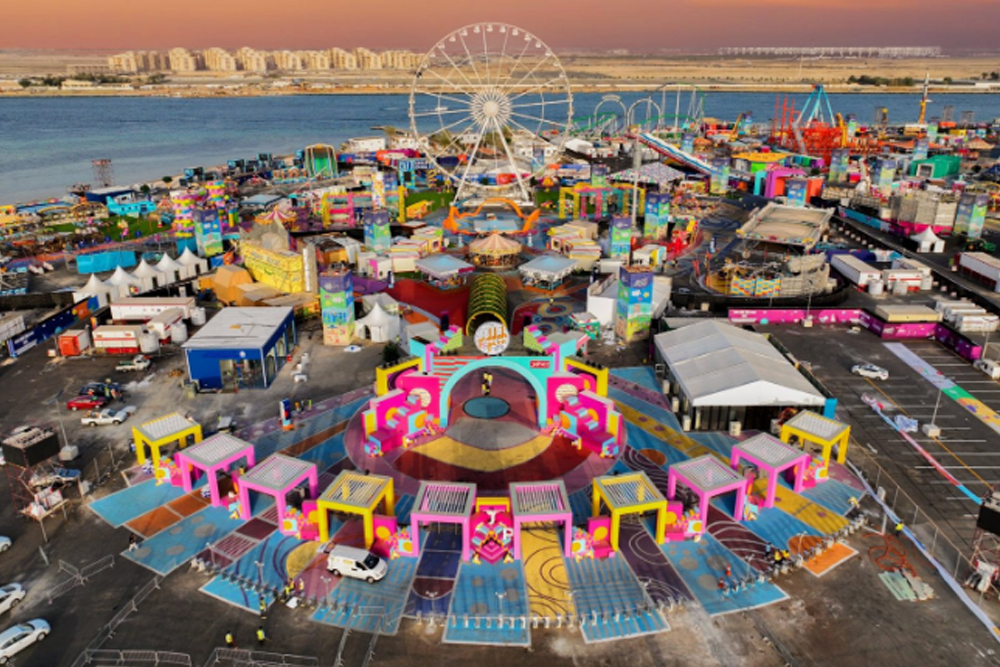
City Walk in Jeddah is one of the most important annual attractions taking place in the city year after year. Located in the Ash Shati district, near the Jeddah Promenade, it is essentially a family-friendly entertainment zone that welcomes visitors of all ages. Spanning over 282,000 square meters, City Walk is a lively space bursting with energy, offering a variety of entertainment experiences for families—making it one of the most diverse attraction hubs in Jeddah. What to do at City Walk Since its inauguration in 2022, this space has become a cultural and entertainment hub in Jeddah. City Walk is divided into multiple sub-zones, each designed to provide a unique experience: Featured events During Jeddah Season, City Walk has hosted numerous events, including concerts, live performances, and cultural festivals. These activities have made it a community hotspot and a must-visit tourist attraction. Although City Walk is currently not in operation, it is set to reopen in June, bringing back all its excitement and entertainment. Conclusion City Walk in Jeddah goes beyond a simple promenade, offering a dynamic mix of culture, entertainment, and gastronomy. With thrilling attractions, diverse culinary experiences, and immersive events, it stands out as a sparkling destination in the city.
Top 11 Things to Do in Jeddah Like a Local
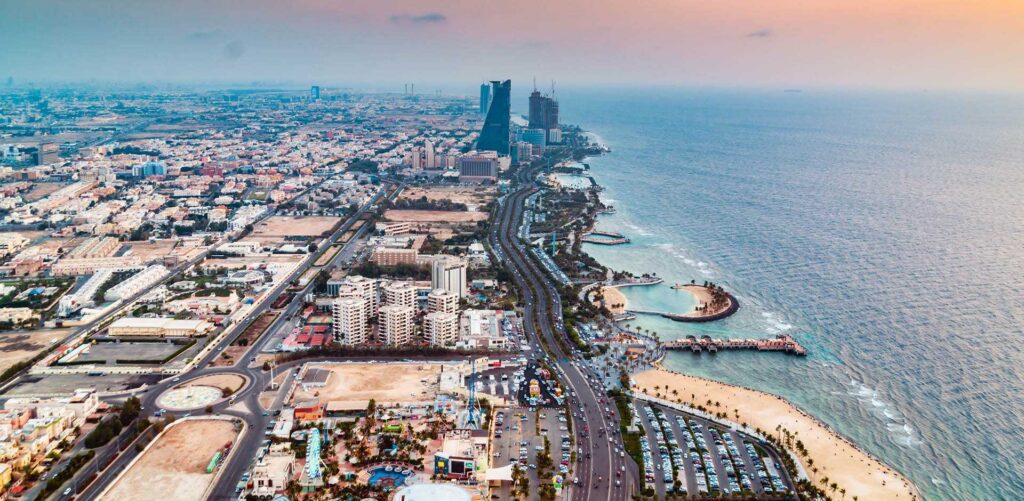
Jeddah is the gateway to Saudi Arabia and one of the most stunning cities in the country. With its blend of history, modernity, and a prime location on the Red Sea coast, this vibrant metropolis has something for everyone. If you get here by plane, Jeddah’s airport – King Abdulaziz International Airport – is located 19 kilometers away from the city and serves both Jeddah and Mecca. Whether you want to immerse yourself in its fascinating past in the historic district of Al-Balad, enjoy thrilling rides at its theme parks, or marvel at contemporary art in its cultural spaces, Jeddah is a destination that surprises at every turn. If you’re looking to explore the city like a local, this things to do in Jeddah guide is definitely for you. Summary 1. Explore Old Jeddah (Al-Balad) Walking through Al-Balad is like traveling back in time. Founded in the 7th century, this district is a maze of narrow alleys, traditional coral stone houses with intricate wooden balconies, and souks where the air is filled with the scent of incense and spices. Declared a UNESCO World Heritage Site, Al-Balad is the perfect place to dive into Jeddah’s history, visit ancient mansions like Beit Nassif, and discover small artisan shops and cafés hidden among its centuries-old walls. Don’t miss the chance to explore it at sunset, when the golden light enhances its architectural beauty and the city comes alive with the energy of its people. 2. Go Scuba Diving Jeddah is a paradise for diving enthusiasts. Its crystal-clear waters and vibrant marine life make it one of the world’s top diving destinations. With an impressive variety of pristine coral reefs, underwater caves, and the chance to spot species like manta rays, turtles, and sharks, every dive is an adventure. Spots like Sharm Obhur, Abu Tair Reef, and the famous Cable Wreck offer unforgettable experiences for both beginners and advanced divers. If you prefer snorkeling, the shallow waters also reveal a world full of color and biodiversity. It’s the perfect opportunity to explore the Red Sea and discover a side of Jeddah that few get to see. 3. Atallah Happy Land & Al-Shalal Theme Parks Jeddah is not just about history and the sea—it’s also about adrenaline and entertainment. Atallah Happy Land Park is a favorite among families and young visitors looking for exciting rides. From roller coasters to water attractions and interactive zones, this park offers fun for all ages. Plus, its location by the Red Sea provides a unique atmosphere to enjoy the experience. Meanwhile, Al-Shalal Theme Park is the ultimate destination for thrill-seekers. With a high-speed roller coaster and an ice-skating rink, it is one of the most complete amusement parks in the region. The park also hosts themed nights that transport visitors to different cultures through performances and special decorations. 4. Herbalists Lane In the heart of Jeddah, away from the modern bustle, lies a hidden gem that awakens the senses: Herbalists Lane. This narrow alley is a true treasure trove for those seeking natural remedies, exotic spices, and traditional perfumes. Here, local herbalists have passed down their knowledge for generations, offering everything from healing herbal blends to essential oils and unique Arabian fragrances. Strolling through this market is a sensory experience—the air is filled with the aroma of incense, saffron, and myrrh, while merchants share stories about the benefits of each plant. If you’re looking for an authentic Jeddah souvenir, this is the perfect place to find natural products with centuries of tradition. 5. Go Shopping in Jeddah Jeddah is a dream destination for shopping lovers, blending luxury malls with the charm of traditional souks. If you’re looking for international brands and a high-end experience, places like Red Sea Mall, Mall of Arabia, and Boulevard Jeddah offer a variety of designer boutiques, restaurants, and top-tier entertainment. For those who prefer to immerse themselves in local culture, souks like Souq Al Alawi and Souq Bab Makkah are perfect for discovering textiles, gold jewelry, spices, and traditional handicrafts. Bargaining is part of the experience here, and interacting with the vendors is a highlight in itself – this is a major part of your girls’ trip. 6. Al Rahma Mosque One of Jeddah’s most breathtaking landmarks is Al Rahma Mosque, popularly known as the Floating Mosque. Built over the waters of the Red Sea, its white structure appears to be suspended on the horizon when the tide is high, creating a magical and serene image. Built in 1985, this mosque blends traditional Islamic architecture with modern design elements, featuring a majestic turquoise dome and intricate interior details. It remains an active place of worship, but it is also a peaceful site for visitors seeking a moment of reflection, especially at sunrise or sunset when the light transforms the scenery into a stunning postcard. 7. Nassif House Museum Located in the heart of Al-Balad, Nassif House is one of Jeddah’s most iconic architectural gems. Built in the 19th century, this majestic mansion once belonged to one of the city’s most influential families and even housed King Abdulaziz Ibn Saud during his early visits to Jeddah. Now a museum, the house offers a fascinating glimpse into the city’s past, with exhibitions showcasing manuscripts, Islamic art, and historical artifacts. Climbing its wide staircase and wandering through its grand halls feels like stepping back to a time when Jeddah was a crucial hub of trade and culture in the Arabian Peninsula. 8. Hike in Moon Valley Just an hour from Jeddah (120 km), Moon Valley is the perfect spot for a day trip. Its name comes from its rocky, barren landscapes, which resemble the surface of the Moon. Towering rock formations and canyons carved by the wind create a surreal setting, ideal for hiking and adventure seekers. This valley is especially popular among those looking to disconnect from the city and enjoy pure nature. During the day, it’s a great place to explore on foot, while at night, its clear skies offer some of the best
13 Must-Do Activities in Riyadh: A Guide to Experiencing the Heart of Saudi Arabia
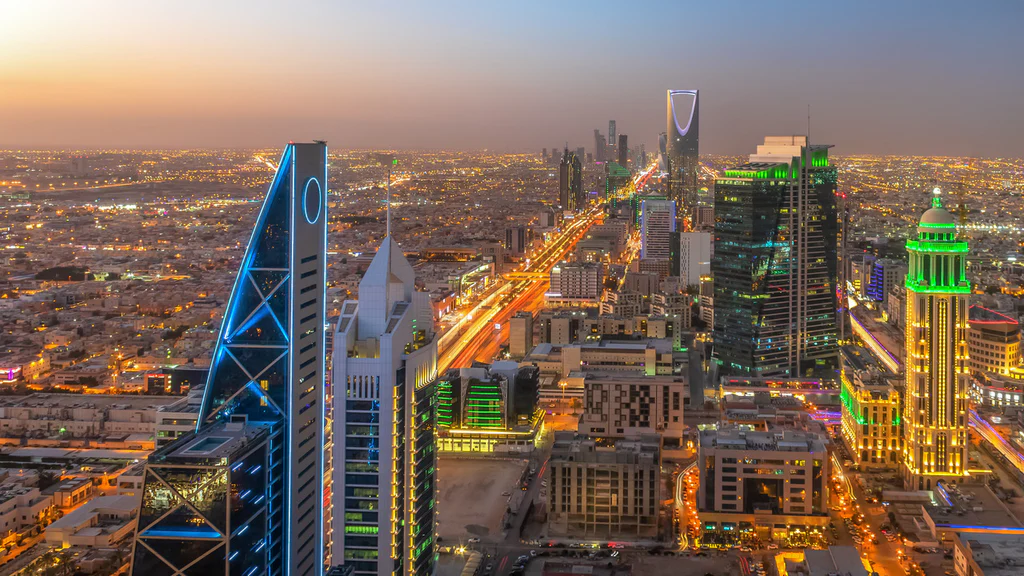
Riyadh is the capital of Saudi Arabia, making it one of the country’s most important cities and undoubtedly a place with plenty to offer. Art, culinary experiences, cultural events, festivals—Riyadh truly has it all. If you’re planning a trip and will be visiting this city soon, don’t miss these 13 things. They will help you experience it like a local, in no particular order. Summary 1. Masmak Fortress Anyone seeking to explore and understand the rich cultural heritage of Saudi Arabia must visit Al Masmak Palace. Today, it functions as a museum that houses dozens of historically significant artifacts related to Riyadh’s history. Maps, weapons, pieces of art—all essential to understanding the kingdom’s historical legacy. For many, this site is considered a testament to the resilience of the Saudi people, having served as a military base in 1902, despite being over 150 years old. Visiting this landmark is a must during a first trip to Riyadh to truly appreciate the history and strength of the nation and its people. 2. The National Museum of Saudi Arabia This is perhaps the most important museum in the entire kingdom. The National Museum of Saudi Arabia houses hundreds of years of Arab history and culture, meticulously curated from prehistoric times to the present day. As the largest museum in the country, travelers are advised to set aside a full day to explore it at their own pace, allowing ample time to understand and appreciate everything on display. You do not need tickets to enter. 3. Al Bujairi Square This park is a city icon you can’t miss on your first (or even tenth) visit to Riyadh. It’s a stunning oasis located right in the heart of the city, filled with lush trees and shrubs that accompany you along the way. Al Bujairi Square also features serene lakes, making it a peaceful retreat to enjoy the tranquility of nature amid the urban landscape. And since no outing is complete without something delicious to eat, this park has you covered. Throughout the area, you’ll find various food stalls offering regional and international cuisine to enjoy after your stroll. If you’re lucky enough to visit on a Thursday, you can catch the traditional sword-dancing performance around 9 p.m.—a must-see that adds both fun and cultural insight to your trip. 4. The King Abdullah Park King Abdullah Park (formerly known as Al-Malaz Square) is a sprawling park in Riyadh that offers a wide setting of amenities, including cafés, a restaurant, a children’s play area, sports courts, and a pedestrian walkway. The park frequently hosts large-scale events, such as festivals and cultural performances, and features a stunning interactive fountain. At night, the fountain’s waters dance to the rhythm of lights, creating a mesmerizing display. It’s important to note that entry to King Abdullah Park requires purchasing a ticket, making it a more exclusive venue with smaller crowds compared to other free parks. 5. At-Turaif District This site in Diriyah, northwest of Riyadh, has been declared a UNESCO World Heritage Site, making it a must-visit destination in the city. It is one of the most politically and historically significant locations in Saudi Arabia, as it represents the capital of the Saudi dynasty. Visitors of At-Turaif can explore the ruins of ancient palaces and remnants of what was once a thriving urban region. It’s an unparalleled cultural experience, perfect for those eager to learn more about the region’s history and its pivotal importance. 6. Edge of the World (Jebel Fihrayn) Northwest of Riyadh lies the Edge of the World, known in Arabic as Jebel Fihrayn. This popular hiking spot is part of the renowned Tuwaiq mountain range. The name “Edge of the World” comes from the breathtaking experience of standing at the edge of a cliff and gazing down at the vast expanse of the desert below. The rock formations are truly dreamlike, making you feel as if the end of the world is right beneath your feet. Access to Jebel Fihrayn is only possible on foot, so it’s recommended to visit during the cooler months to avoid the intense heat of the Saudi capital. This stunning viewpoint is a perfect spot to watch the sunrise or sunset. Also, since this spot is not located in the city centre of Riyadh, we recommend you take it as a day trip to enjoy your time at maximum. 7. Souq Al Zal Market enthusiasts will have an incredible time at Souq Al Zal, the most impressive market in all of Riyadh. This is the perfect place to find traditional Saudi items such as dallah coffee pots and beautiful mabkhara incense burners, as well as coins, antiques, and even musical instruments. Visiting this market is like stepping back in time, as you explore over 35,000 square meters of history deeply rooted in the city and the entire country. 8. Al Hair Parks and Lakes Located about 45 kilometers south of Riyadh, the parks and lakes of Al Hair offer a peaceful retreat surrounded by the natural beauty of the historic Wadi Hanifa. The main attraction is the “Ringing Bird” lake, renowned for its waterfalls that resemble a miniature version of Niagara Falls. This park is perfect for boating, family picnics, or simply enjoying the scenery. Its expansive green spaces, children’s play areas, and food stalls make it an ideal destination for a day out. It’s also a favorite spot for photography enthusiasts, particularly at sunrise and sunset. Open year-round with free entry, Al Hair is an accessible and charming option for both locals and tourists looking to escape the hustle and bustle of the city. 9. Kingdom Centre The Kingdom Centre, located in the heart of Riyadh, is an iconic skyscraper that symbolizes the city’s modernity and growth. Standing at 302 meters tall with 41 floors, it was inaugurated in 2002 and is distinguished by its inverted arch at the top, which houses the Sky Bridge—a walkway offering panoramic views of the city. The Sky Bridge is open daily from 12:00 PM
Burkini: The Perfect Modest Swimwear for Women
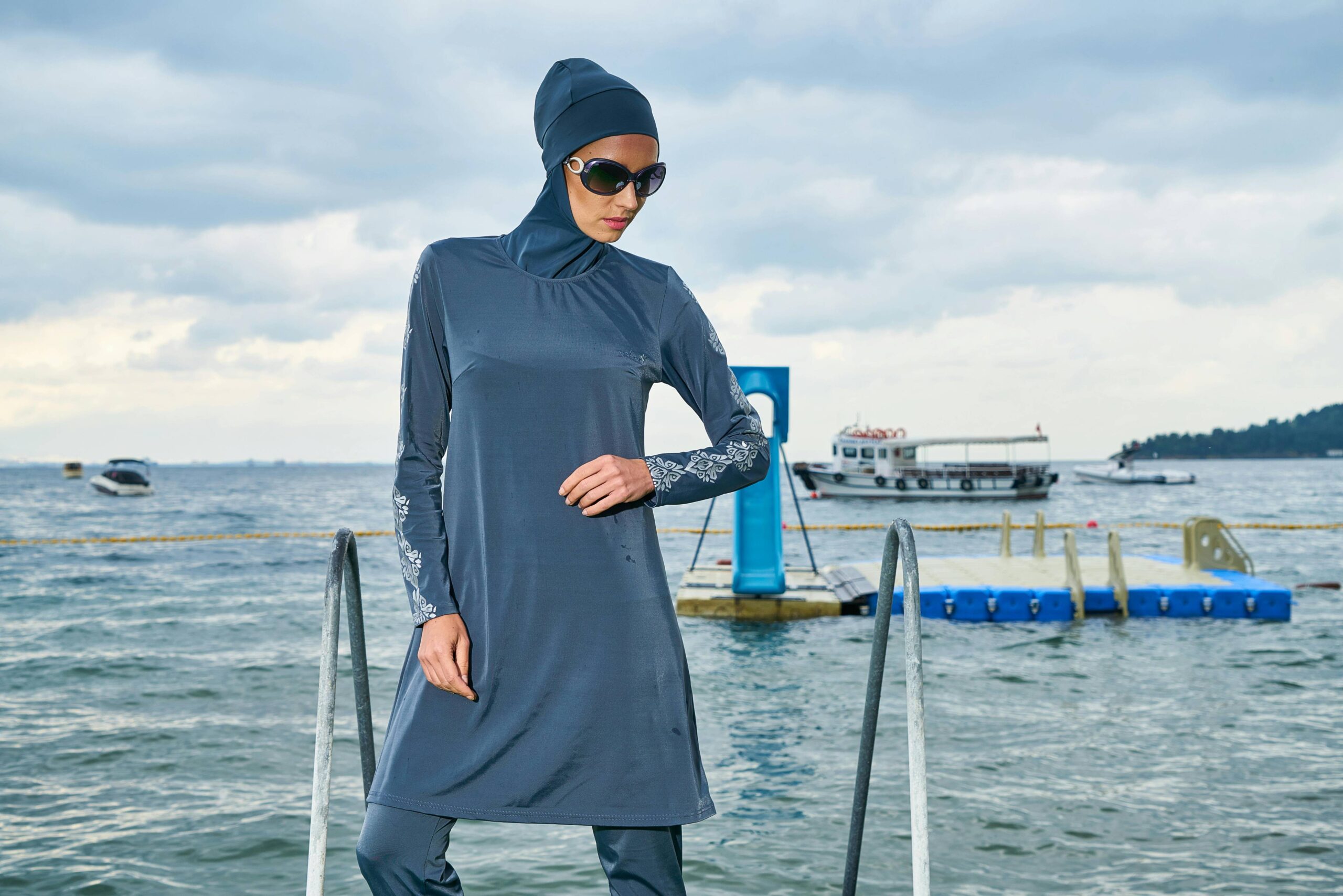
The burkini is a special type of swimwear designed to cover the whole body except for the face, hands, and feet. While it is popular among Muslim women who wish to stay modest while swimming, it can also be worn by non-Muslim women for various reasons like sun protection, comfort, or simply personal preference. The burkini is a versatile and practical option for anyone who prefers more coverage while enjoying water activities. What is a Burkini? The burkini, a combination of the words “burqa” and “bikini,” was invented in 2004 by Australian designer Aheda Zanetti. She created it to offer Muslim women an option that aligns with their values while allowing them to participate in swimming and other water activities. The burkini is made from lightweight, quick-drying material, usually a blend of polyester and spandex, allowing for easy movement in the water while covering the body. It typically comes in two or three pieces: a tunic or top, leggings, and sometimes a headscarf, ensuring comfort and practicality for swimming. Reasons to Wear a Burkini Modesty: Many women choose the burkini to align with their beliefs or cultural values, ensuring their bodies are covered while still enjoying the water. Sun Protection: One of the significant advantages of wearing a burkini is the extensive coverage it provides. It helps protect the skin from harmful UV rays and reduces the risk of sunburn, making it an ideal choice for those with sensitive skin who want to avoid skin damage while enjoying time at the beach or pool. Comfort: Some women feel more comfortable in a burkini than in traditional swimwear, as it offers more coverage and can be less revealing. Personal Preference: Beyond religious or cultural reasons, some women simply prefer the style and coverage of a burkini, finding it more suitable for their needs. Swimming Clothing for Coverage It’s important to note that wearing clothing to cover the body while swimming is not a new concept. In many countries, both men and women wear swimming outfits like surf shirts and leggings to protect themselves from the sun or for specific sports. In some cases, people also wear full-coverage swimwear due to medical conditions that require protection from sun exposure. The burkini is simply another option that offers fashion and practicality, making it suitable for a wide range of people, not just Muslims. The Burkini Bans: Controversy and Reasons Despite its usefulness, the burkini has been banned in some places, especially in parts of Europe. The reasons for these bans differ. Some people believe the burkini shows religious beliefs that clash with the secular values in countries like France. Others think it might be unsafe in public pools or doesn’t fit with local customs. These bans have led to debates about religious freedom, women’s rights, and cultural diversity, with many people against the restrictions.Wwomen should be free to wear whatever they choose. Restricting clothing choices can prevent some women from enjoying activities like swimming, especially if they can’t wear what makes them comfortable. Allowing diverse clothing options helps ensure everyone can participate in and enjoy public spaces, like beaches and pools, without feeling excluded. The Growing Popularity of the Burkini Since its creation, the burkini has gained popularity worldwide, with many women appreciating its versatility. It allows women of all backgrounds to participate in swimming and other water activities without compromising their values or comfort. On the bright side, if you’re in Dubai or planning a visit, you can freely wear your burkini, as most swimming areas there are burkini-friendly. Today, the burkini is available in various styles and colors, making it a fashionable choice as well. How to Choose Your Burkini? Choosing the right burkini involves a few key factors to ensure comfort and style. Here’s a simple guide to help you: Fabric Quality: Choose burkinis made from high-quality, breathable fabrics like Lycra or spandex. These materials are comfortable and less likely to stick to your body. Fit and Size: Opt for a burkini that fits snugly but isn’t too tight, allowing for easy movement. A looser design can also help reduce direct contact with your skin and minimize sticking. Sun Protection: If you’re concerned about sun exposure, select a burkini with built-in UV protection for extra coverage. Ease of Wear: Look for features like adjustable straps or a front zipper to make wearing and removing the burkini easier. Style and Color: Pick a color and pattern that reflects your personal style. Feeling good about your burkini will boost your confidence. Care and Maintenance: Choose a burkini that is easy to care for, as frequent washing is often needed. By considering these factors, you can find a burkini that is both comfortable and stylish. We recommend this burkini for quick delivery in Dubai. The burkini is a great choice for women who want modest, comfortable, and practical swimwear. It’s ideal for those who need to cover up for religious reasons, protect their skin from the sun, or simply prefer a practical and stylish option. More and more women are choosing the burkini, and while it has been banned in some places, it’s clear that many women find it useful and it suits a variety of needs beyond just religious ones. Ultimately, every woman should have the freedom to choose the swimwear that best fits her needs and values.
